Getting your Trinity Audio player ready...
Leaders and royalty gathered in London on Monday to mourn Queen Elizabeth amid scenes of matchless pageantry, a fitting end for Britain's longest-serving monarch who won respect the world over for her 70 years on the throne.
King Charles and other senior British royals followed her flag-draped coffin into Westminster Abbey on Monday at the start of her state funeral, the country's first since 1965 when Winston Churchill was afforded the honor.
6 View gallery
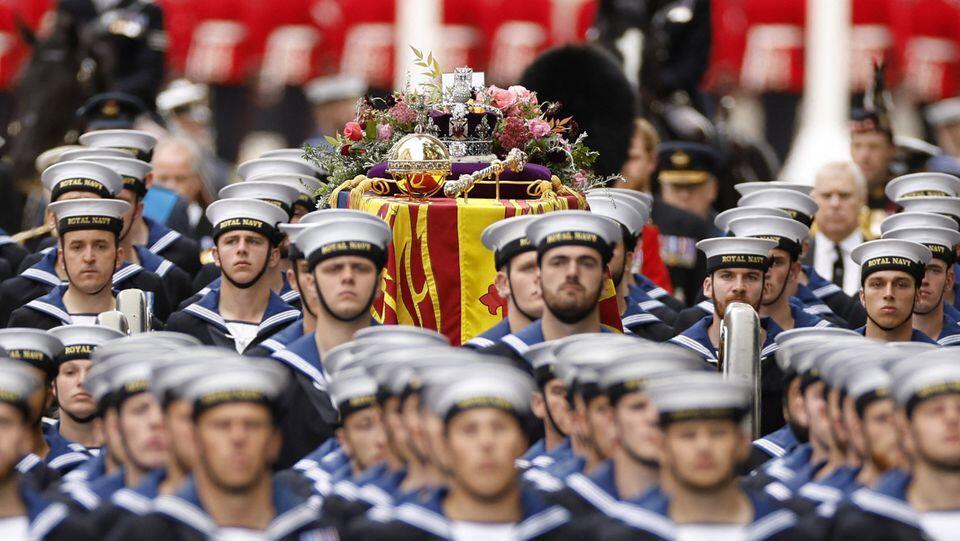

The coffin of Britain's Queen Elizabeth makes its way to Westminster Abbey
(Photo: Reuters)
Tens of thousands of people lined the streets as the queen's casket made the short journey from Westminster Hall where she had been lying-in-state, pulled along on a gun carriage by 142 sailors with arms linked. A bell tolled and bagpipes skirled.
Pin-drop silence fell over London's Hyde Park nearby as thousands of people, who for hours had picnicked and chatted, went quiet the second the queen's coffin appeared on screens erected for the occasion.
Shortly before, hundreds of armed personnel in full ceremonial dress had marched in a historic display of kilts, bearskin hats, scarlet tunics and bands in white gloves.
Inside the abbey, lines of scripture were set to music that has been used at every state funeral since the early 18th century. Among those walking behind the casket was her great-grandson and future king, 9-year-old Prince George.
6 View gallery
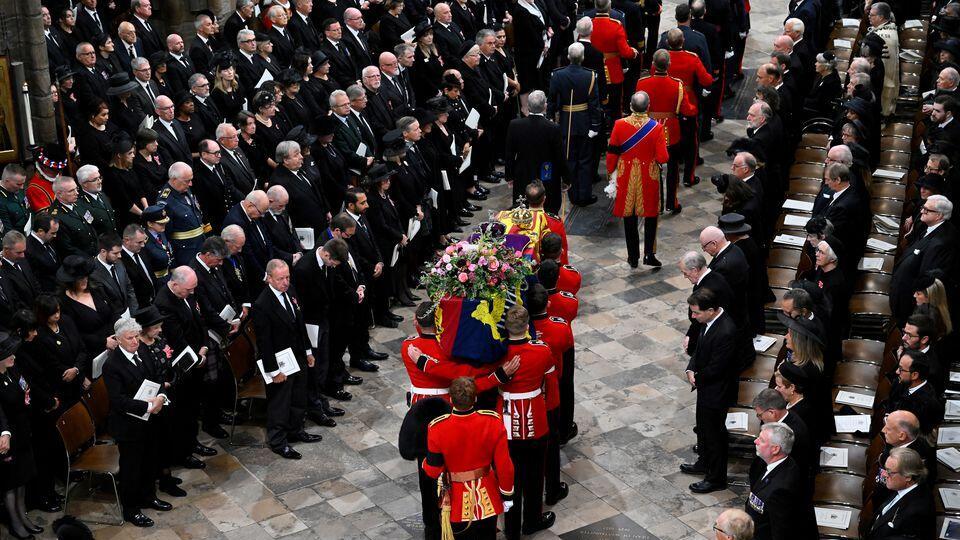

The coffin of Queen Elizabeth II with the Imperial State Crown resting on top is carried by the Bearer Party into Westminster Abbey
(Photo: Reuters)
The 2,000-strong congregation included some 500 presidents, prime ministers, foreign royal families and dignitaries including Joe Biden of the United States and leaders from France, Canada, Australia, China, Pakistan and the Cook Islands.
Justin Welby, the Archbishop of Canterbury, told the congregation that the grief felt by so many across Britain and the wider world reflected the late monarch's "abundant life and loving service."
"Her late majesty famously declared on a 21st birthday broadcast that her whole life would be dedicated to serving the nation and Commonwealth," he said.
"Rarely has such a promise been so well kept. Few leaders receive the outpouring of love that we have seen."
Among the crowds who came from around Britain and beyond, people climbed lampposts and stood on barriers and ladders to catch a glimpse of the royal procession - one of the largest of its kind in modern history in the capital.
6 View gallery
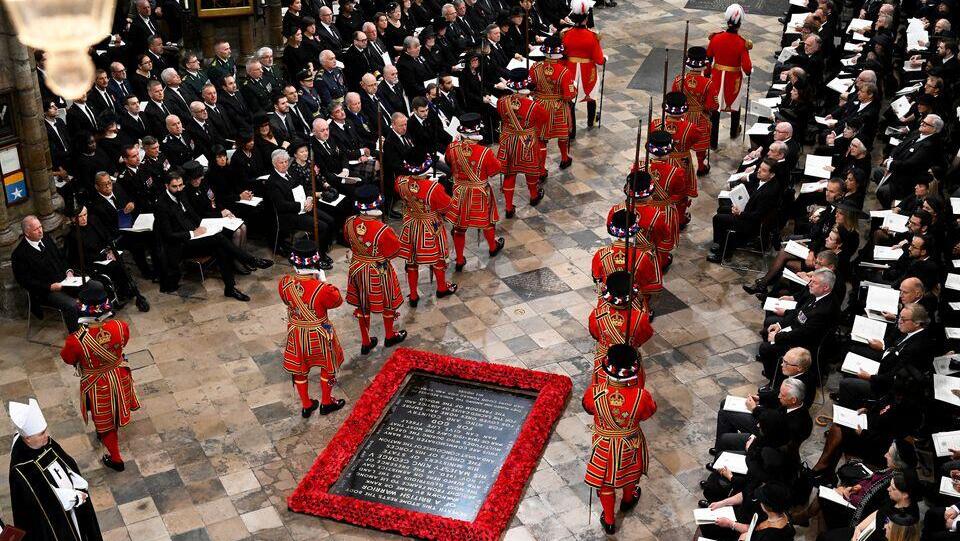

The Yeoman of the Guard arrive in Westminster Abbey during The State Funeral of Queen Elizabeth II
(Photo: Reuters)
Those who had camped out in nearby streets were watching the service on smartphones, while hush descended along the Mall, one of London's grand ceremonial boulevards, as the funeral service was relayed live through loudspeakers.
Some wore smart black suits and dresses. Others were dressed in hoodies, leggings and tracksuits. A woman with dyed green hair stood next to a man in morning suit as they waited for the procession to begin.
Millions more will watch on television at home on a public holiday declared for the occasion. The funeral of a British monarch has never been televised before. Around the wider capital, normally bustling streets were deserted.
Ben Vega, 47, a nurse from the Philippines standing at the back of the crowd on a stool, said he was a royalist.
"I love pageantry. I love how the British do this," he said. "I'm from the Philippines, we don't have this, we don't have royal families. It's a sad day for me. I've been here 20 years. I saw the queen as my second mum, England as my second home."
6 View gallery
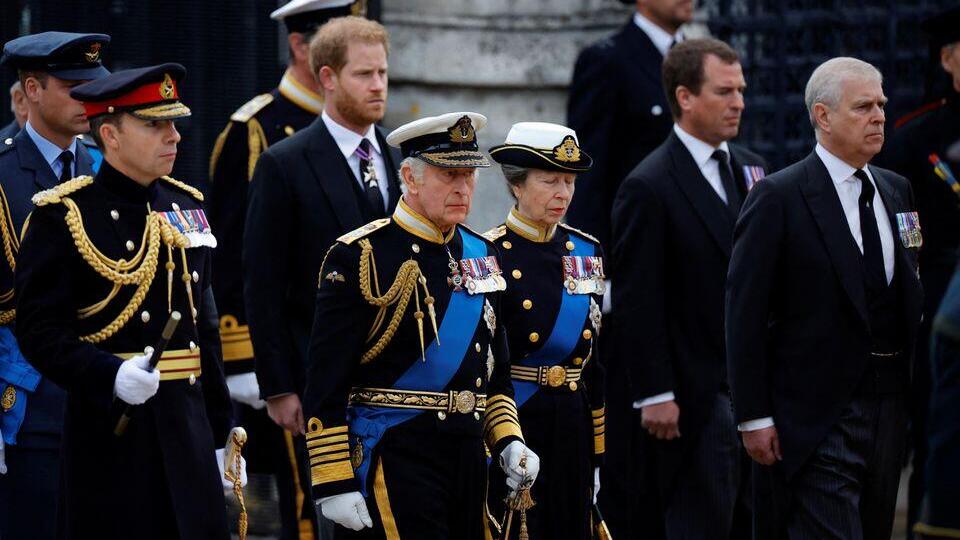

Britain's King Charles, Britain's Anne, Princess Royal, Prince Andrew, Prince Harry and Peter Phillips attend the state funeral and burial of Britain's Queen Elizabeth
(Photo: Reuters)
'Invincible'
Elizabeth died on Sept. 8 at her Scottish summer home, Balmoral Castle.
Her health had been in decline, and for months the monarch who had carried out hundreds of official engagements well into her 90s had withdrawn from public life.
However, in line with her sense of duty she was photographed just two days before she died, looking frail but smiling and holding a walking stick as she appointed Liz Truss as her 15th and final prime minister.
Such was her longevity and her inextricable link with Britain that even her own family found her passing a shock.
"We all thought she was invincible," Prince William told well-wishers.
The 40th sovereign in a line that traces its lineage back to 1066, Elizabeth came to the throne in 1952, Britain's first post-imperial monarch.
She oversaw her nation trying to carve out a new place in the world, and she was instrumental in the emergence of the Commonwealth of Nations, now a grouping comprising 56 countries.
6 View gallery
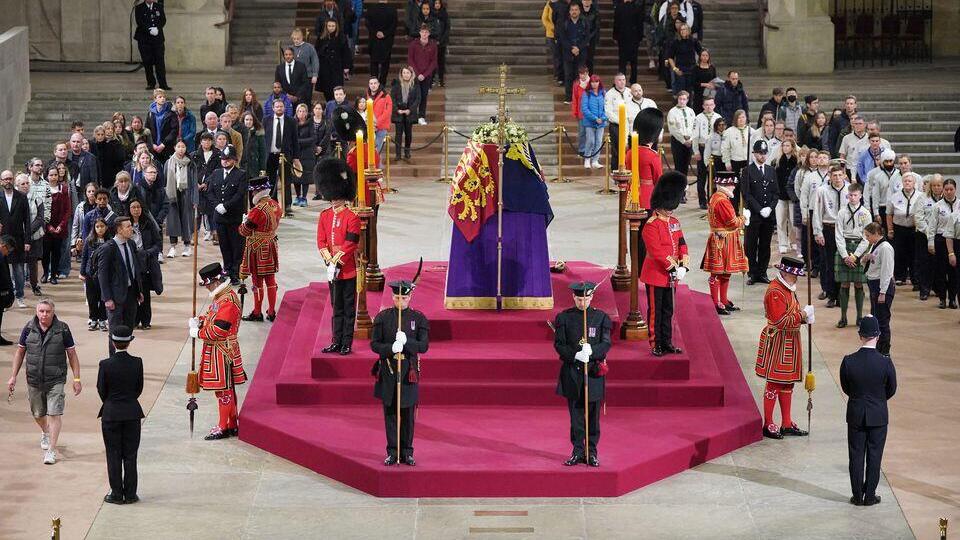

Final members of the public pay their respects at the coffin of Queen Elizabeth II
(Photo: Reuters)
When she succeeded her father George VI, Winston Churchill was her first prime minister and Josef Stalin led the Soviet Union. She met major figures from politics to entertainment and sport including Nelson Mandela, Pope John Paul II, the Beatles, Marilyn Monroe, Pele and Roger Federer.
Despite being reputedly 5ft 3ins (1.6m) tall, she dominated rooms with her presence and became a towering global figure, praised in death from Paris and Washington to Moscow and Beijing. National mourning was observed in Brazil, Jordan and Cuba, countries with which she had little direct link.
"Queen Elizabeth II was without any shadow of a doubt the best known figure in the world, the most photographed person in history, the most recognizable person," historian Anthony Seldon told Reuters.
Transport chiefs said one million people were expected in central London for the funeral, while police say it will be the biggest security operation ever in the capital.
The tenor bell of the Abbey - the site of coronations, weddings and burials of English and then British kings and queens for almost 1,000 years - tolled 96 times.
Among the hymns chosen for the service were "The Lord's my Shepherd", sung at the wedding of the queen and her husband Prince Philip in the Abbey in 1947.
In addition to dignitaries, the congregation includes those awarded Britain's highest military and civilian medals for gallantry, representatives from charities supported by the queen, and those who made "extraordinary contributions" to dealing with the COVID-19 pandemic.
6 View gallery
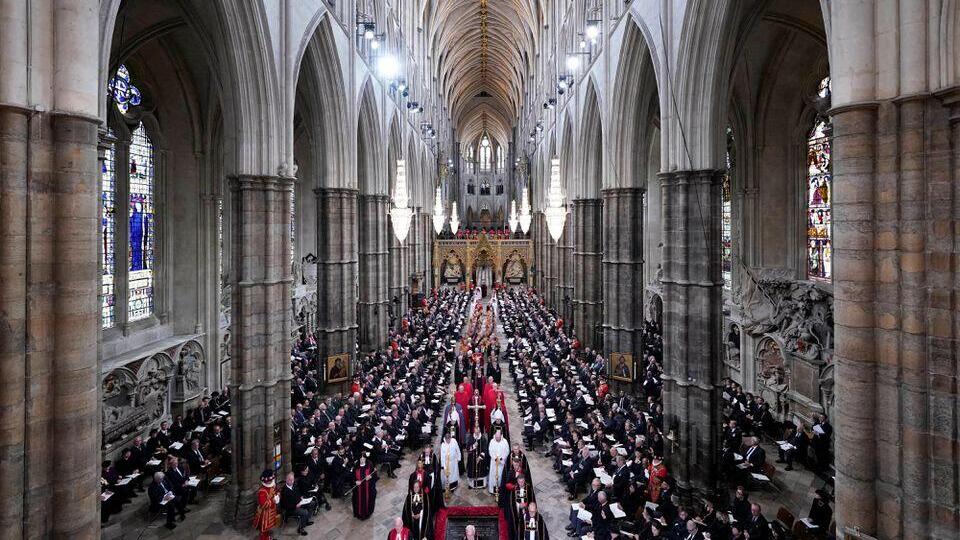

Members of the clergy wait for the coffin of Queen Elizabeth II to arrive at Westminster Abbey
(Photo: Reuters)
Two-minute silence
The funeral will end with the Last Post trumpet salute before the church and the nation falls silent for two minutes.
Afterward, the coffin will be brought through central London, past the queen's Buckingham Palace home to the Wellington Arch at Hyde Park Corner, with the monarch and the royal family following again on foot during the 1.5 miles (2.4 km) procession.
From there, it will be placed on a hearse to be driven to Windsor Castle, west of London, for a service at St. George's Chapel. This will conclude with the crown, orb and scepter - symbols of the monarch's power and governance - being removed from the coffin and placed on the altar.
The Lord Chamberlain, the most senior official in the royal household, will break his 'Wand of Office', signifying the end of his service to the sovereign, and place it on the casket.
It will then be lowered into the royal vault as the Sovereign's Piper plays a lament, slowly walking away until music in the chapel gradually fades.
Later in the evening, in a private family service, the coffin of Elizabeth and her husband of more than seven decades, Philip, who died last year aged 99, will be buried together at the King George VI Memorial Chapel, where her parents and sister, Princess Margaret, also rest.
"We're so happy you're back with Grandpa. Goodbye dear grannie, it has been the honor of our lives to have been your granddaughters and we're so very proud of you," grandchildren Princesses Beatrice and Eugenie said.

